Gain and noise figure are criticial performance parameters for amplifier, mixers, and so on. In my lab, these parameters have so far been determined mostly to a qualitative (i.e., approximate) degree of accuracy, by using either general purpose equipment, or specially build test setups, for the microwave region. Such approach comes with a lot of time lost, difficulty, and lack of absolute measure. Time to improve the noise figure measurement capabilities.
Which instrument to take, well, there are a few options, mainly HP 8970A/8970B and Eaton/Ailtech/Maury (the 2075 model). Remarkably, the 2075 is actually superior the 8970x units, and also had a lower list price, considering that the HP 8970x sold for about USD 10k.
The downside of the 2075, and in particular the more advanced B and C models, there doesn’t seem to be any documentation around, no schematics could be found (if you have a service manual of an Eaton 2075B, or Maury 2075C, please let me know); for the HP 8970A, full manuals and several application notes are around.
As luck would have it, I recently found a unit on xbay, a 8970A, non-working condition, error E26. This error indicated that the IF attentuator calibration has been lost, typically, it is associated with a low battery of the non-volatile memory.
Note the Keysight cal seal – the first one I have ever seen. To proceed with repair, this will be the first thing to be removed. Never mind!
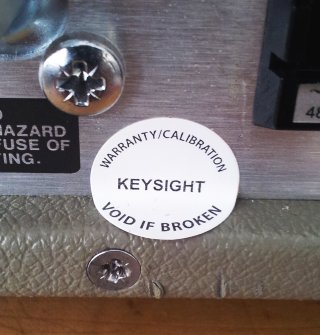
There are multiple versions of the 8970A controller boards, earlier boards use a 3.6 V NiCd rechargeable battery, but these tend to leak, and are now no longer available. The unit I am dealing with has a more recent control boards, using a BR2325 Lithium cell (3.0 V).
Rather than dealing with BR2325 cells, decision was made to replace it with a more permanent solution, which might last 10 years, or longer. A 3.6 V Li-SOCl2 cell, of prime quality, SAFT, Made in France. These cells are of excellent quality, and have very small self discharge.
This is the battery, with some (transparent) heat shrink tubing around the leads.

…a few minutes later, the battery fitted to the board.
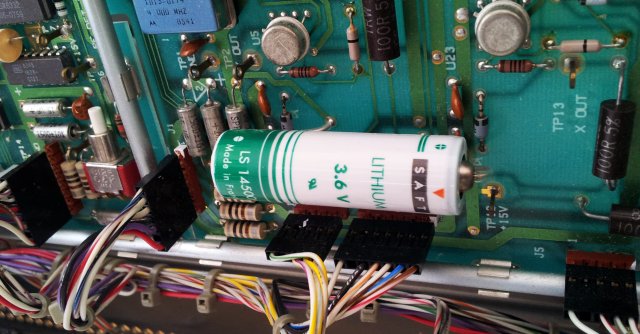
Note the “BR” rather than “CR” coin cell! CR uses Mn-oxide (MnO2) vs Li, whereas the BR type is using a carbonmonofluoride compound, it typically has lower capacity but better long-term performance, which is important for memory back-up applications, where self-dicharge is often more limiting than actual current drain.
The new cell has 2.6 Ah capacity, 15 times more than the coin cell!
Having the battery replaced, now the tricky part. The actual attenuator calibration, to get the proper cal coefficients back into the 8970A. The calibration itself is just a matter of 1 or 2 seconds (initiated by special function SP 33.0), however, it requires a 346B noise source, with 15 ENR output, unfortunately, I don’t own any of these wonderfully noisy things.
Well, there is a work-around. Just push the green PRESET button, and connect a 30 MHz generator (adjustable down to -100 dBm) to the 8970A. Then, we need to adjust power to approximately equal 15 ENR in a 4 MHz bandwidth, the bandwidth of the 8970A.
15 ENR, that’s about 174 dBm/Hz+15 dB+10*log(4 MHz)=-93 dBm on the 30 MHz generator, to get the same total power into the 8970A detector, roughly. Using special function SP 9.2, the 8970A can actually measure absolute noise power, and the generator can be adjusted to result in a reading of about 15-16 dB (which is dB above a -174 dBm/Hz noise floor). Adjusted the generator to -95.5 dBm, which gave just about 15 dB.
Then, execute SP 33.0 to calibrate the attenuators, and all should be fine. In fact, it worked, and the unit is back alive.
The inner construction, it is a thing a beauty, and a pleasure to the eye.
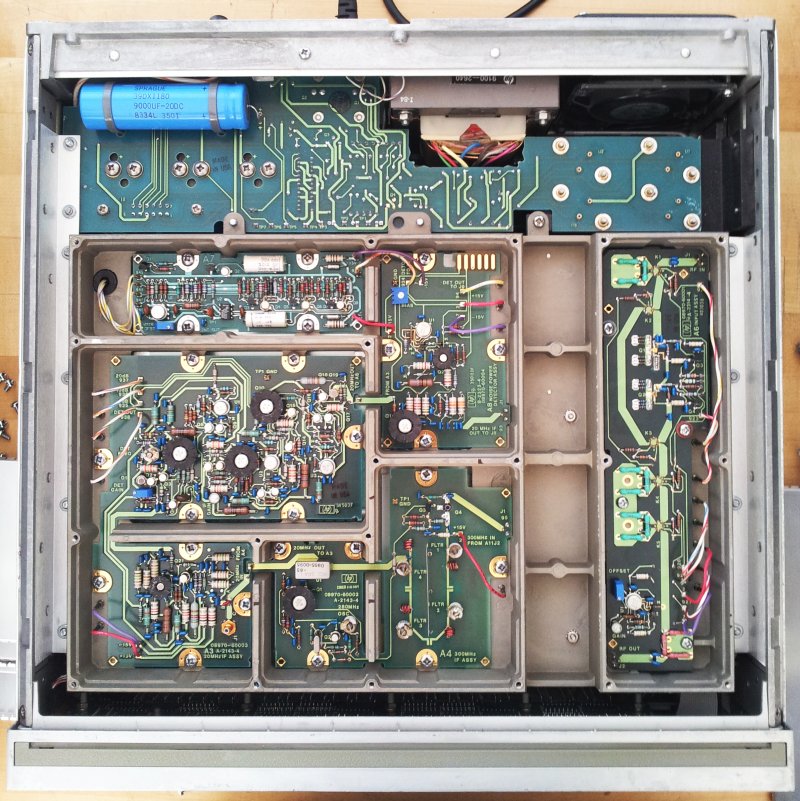
Note the wire above the input section resistor – is this for adjusting their parasitic properties? This I will need to put to a test later, using a few resistors, and measuring the SWR of such PI-type attenuators, with and without wires….
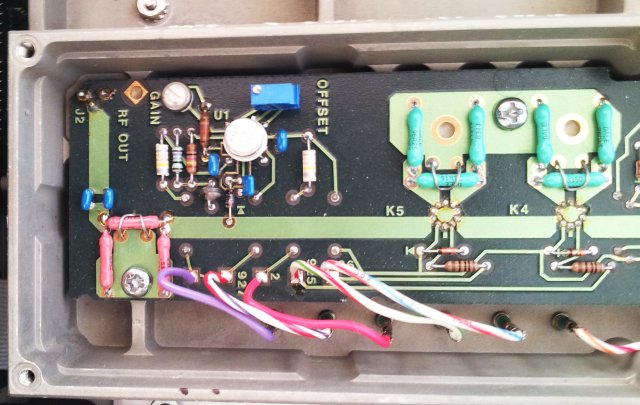
The 1st LO, a YIG oscillator. The same as used in the 8558B spectrum analyzer!
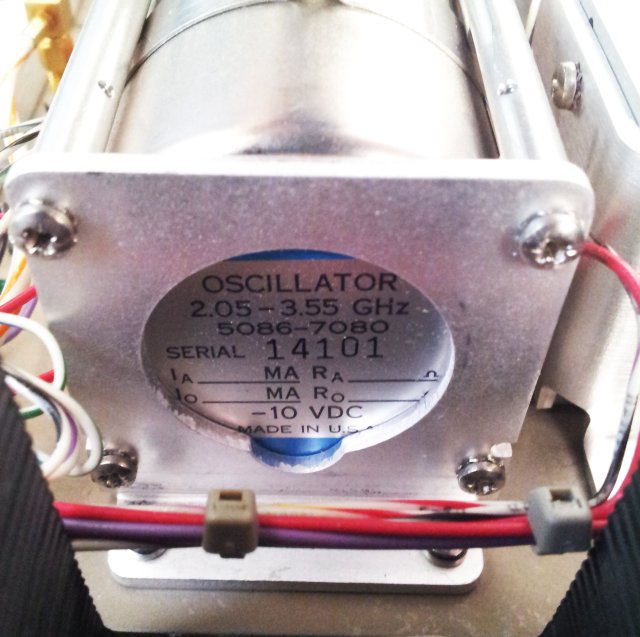
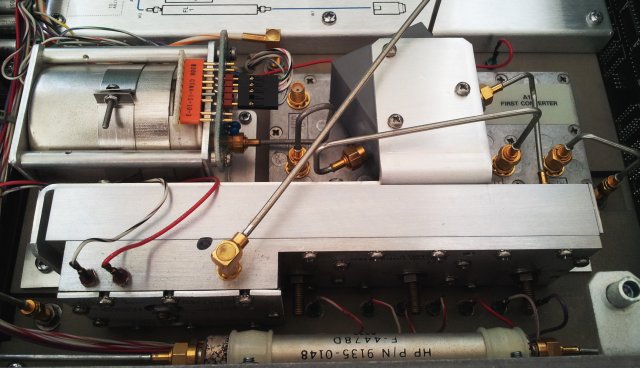
… the 2nd converter is idential, or nearly (fully?) identical to the 2nd converter of th 8565A, 8569A, 8569B spectrum analyzer units (P/N 08565-60216, the A35 assembly of these analyzers). Another example of HP cleverly re-using some of their most ingenious designs.
The shielding of the 8970A assemblies, this seems to have been developed for the 8970 series exclusively, a cast aluminum body, separate, spring-contacted aluminum covers, and a more rugged overall cover with an elastomer/metal mesh seal in the corners to prevent any of the waves from escaping, and to ensure that no spurious signals are getting into the chain of modules. In the end, this is a highly sensitive receiver, working at the thermal noise level. So we don’t want any high-level radio stations radiating into there.
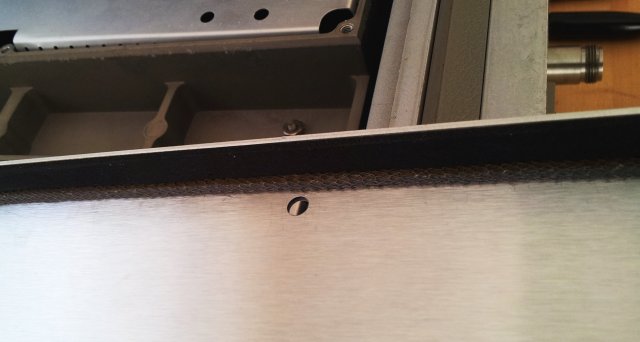

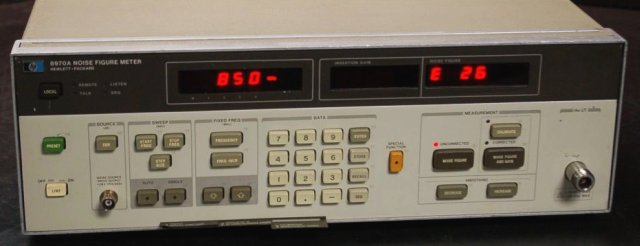
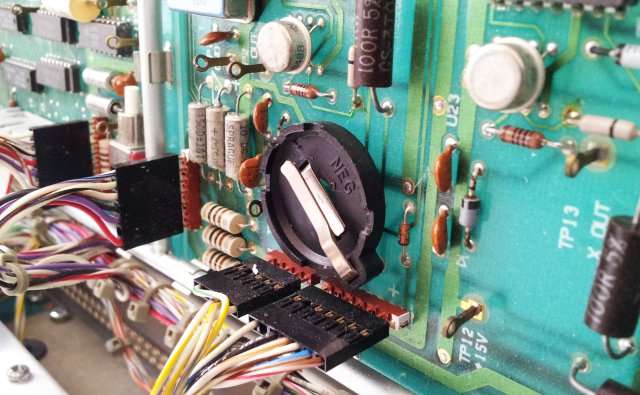
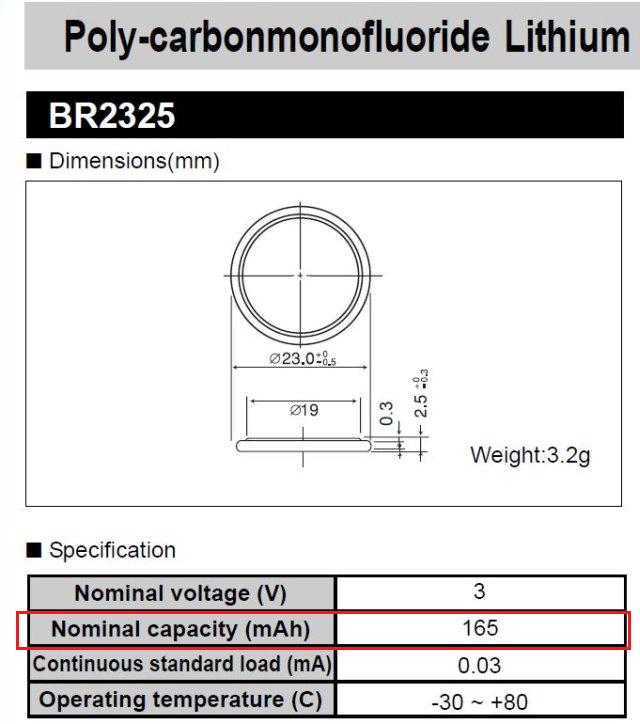
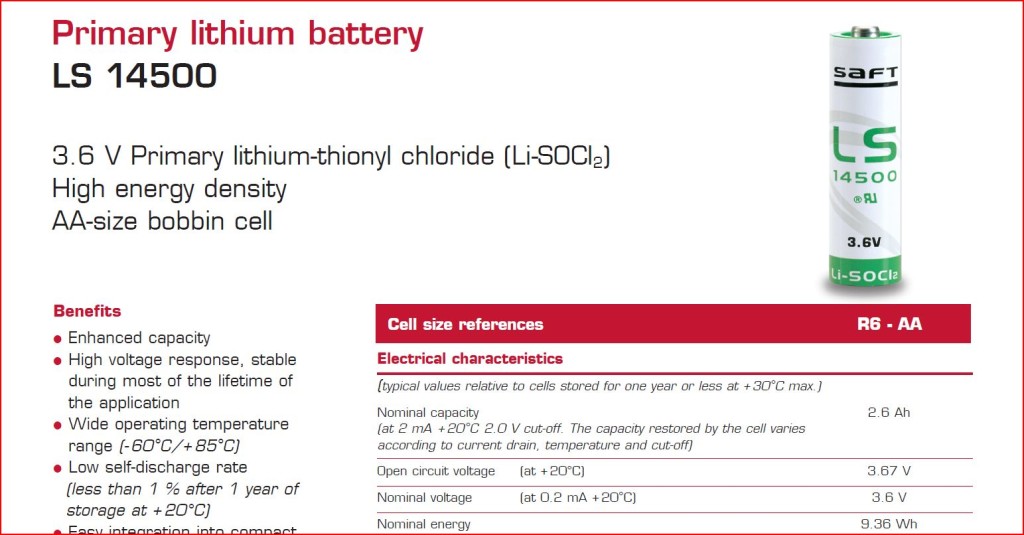
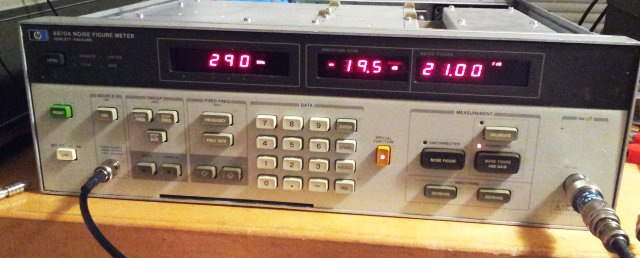
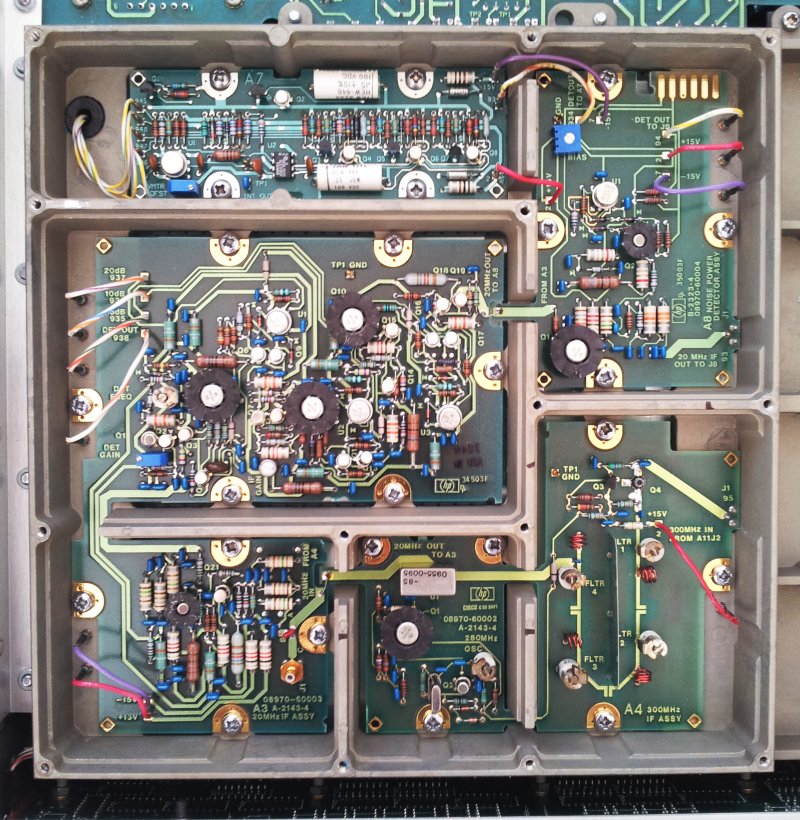
Do you have any idea how much an 8970B had cost brand new? Thank you
I don’t have a price for the 8970B, the A version was 8500 USD in 1983…. like 20k today. The B version came out around 1988. Can only guess that it was about 11-13k.